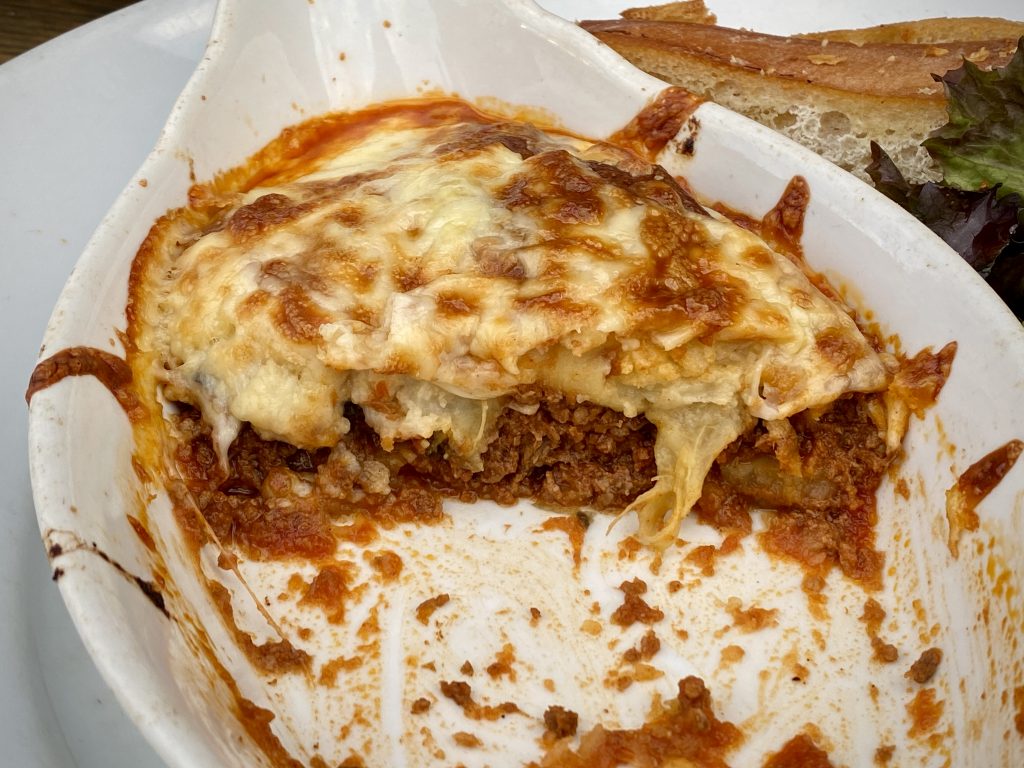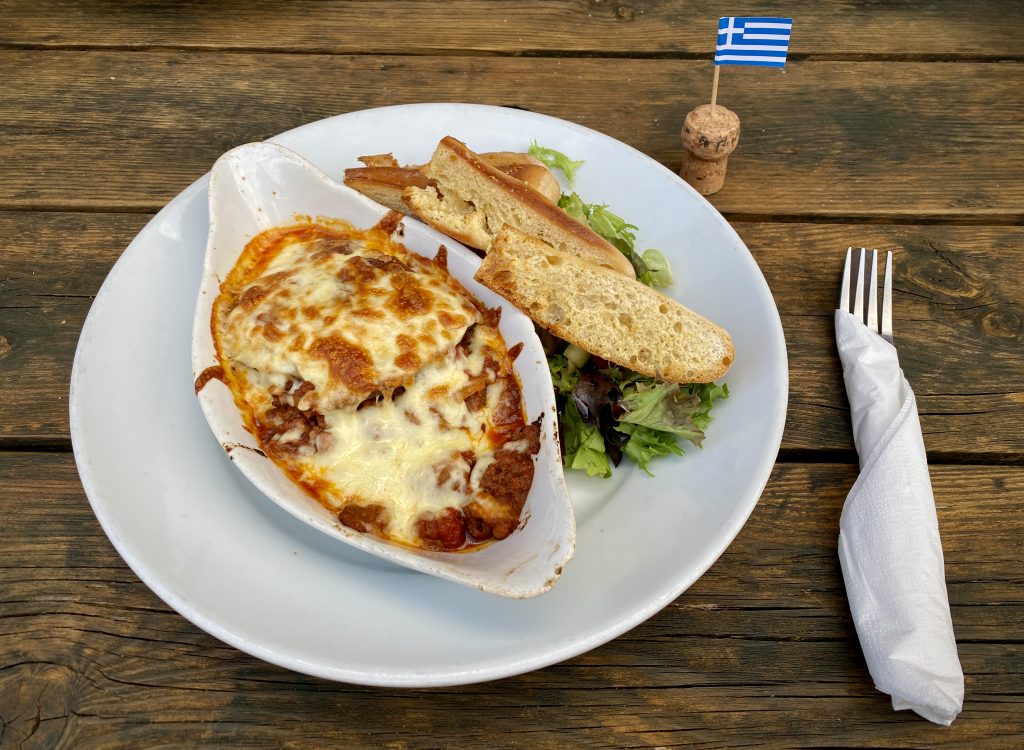When a friend recommended I try the Moussaka at The Bread and Bitter pub in Mapperley, Nottingham, I was both visibly excited, and profoundly intrigued. I’d trawled through too many pub menus to keep count of, seeing the usual burger-and-chips pub grub, and Castle Rock Brewery’s menus had so far disappointed. Yet here it was, an anomaly in the lineup of typical meals. Goodbye gammon and egg, hello moussaka.
A Greek summertime staple, moussaka is famed for its characteristic layers (second only to the delights of ratatouille and lasagne). A ground lamb and beef ragù sets the foundation on which baked aubergine and potato slices are stacked, before a creamy béchamel smothers the lot. Shavings of kefalotyri (or a similar hard, white cheese) top it all off, before the dish is whacked in the oven and cooked to golden brown, bubbling perfection.
This bronzed crust was gladly present on my moussaka, and I took delight in piercing the crispy skin to explore what laid beneath. As my knife slipped downward however, it met the bottom of the dish much quicker than I was expecting. OK, so perhaps not as thick as I’d hoped for, but as long as the layering was all there, not to worry.
Well it certainly was, with soft ovals of aubergine and potato, atop tomatoey meat base. That being said, the thickness of the layers was noticeably conservative; the wobbly slab of béchamel I had anticipated was more of a slim pancake.

One of the five ‘mother sauces’, béchamel is typically made by whisking milk into a hot roux (comprised of butter and flour). Its simple ingredients shouldn’t undermine it’s importance in classical French cuisine however; it is the starting point of many dishes, such as the fish pie, savoury soufflé and aforementioned lasagne.
Yep, you read that right: French cuisine. So how did the béchamel end up in a Greek moussaka? The most widely held view is that Nikolaos Tselementes – a Greek chef who studied in France and fell in love with its food – invented the modern moussaka by combining béchamel with the likes of aubergine and tomato, both popular ingredients in Greek cooking.
Aubergines themselves are believed to have been introduced to Greece from the Levant, and the first recipe for a moussaka-like dish named musakhkhan (similar to the one Tselementes later modified) can be found in the 13th century Arabic cookbook titled the Baghdad Cookery Book.
Now you can go down the rabbit holes of food history forever, but what really mattered to me here was how the moussaka tasted. And being honest, it didn’t taste of much.
Maybe that’s a little harsh, and moussaka is not known for its knock-you-off-your feet flavour, but the warming cinnamon and allspice I was expecting simply didn’t shine through. What’s worth crediting though is that everything was clearly homemade; the tomato sauce was the most dominant in flavour (much better than your average Aldi passata), although not stand-out enough to merit the term ‘intense’.
Before I conclude, I should quickly note a few other pleasing elements. The inclusion of lamb in the meat layer was appreciated, especially as lamb is a much more abundant protein in Greek food than beef. The side salad made a nice addition, as did its sharp balsamic dressing. I was pleasantly surprised to see garlic bread that wasn’t shop-bought too, and it formed a handy spoon to scoop up the moussaka throughout the meal. And unlike the garlic bread I had with The Avenues Cafe’s beef stroganoff, it was actually sliced with a knife. Miracle.
Clocking in at £11.95, The Bread and Bitter’s moussaka was fairly priced for the size of portion it delivered, and although it didn’t quite hit the mark when it came to flavour, brownie points must be given for bucking the trend of easy pub food and putting it on the menu.
All in all, I’d give it a Tribudishional score of 5.5/10. I’d take that any day over gammon, egg and chips.
©The Tribudishional Food Blog


Using garlic bread as a spoon! Peter Kay would be impressed (it’s the future!)